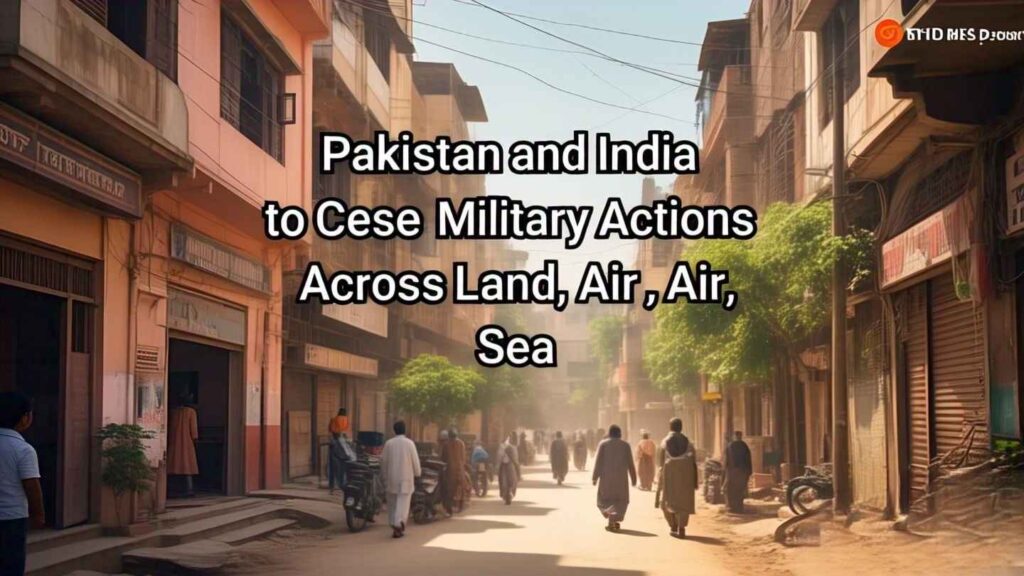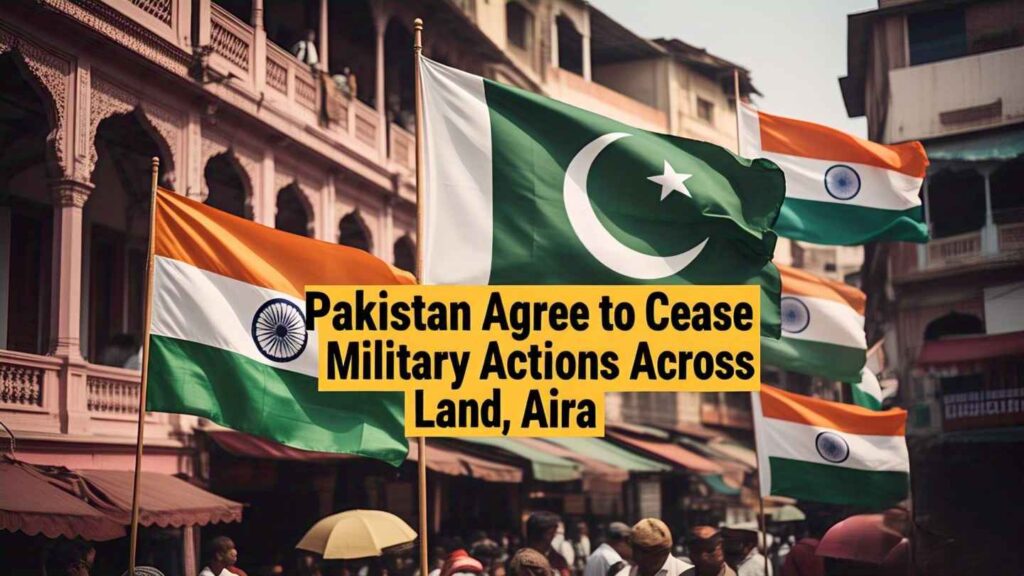In a historic step forward, India and Pakistan have agreed to cease all firing from land, air, and sea. The historic step is being welcomed as a major step in de-escalation and peace between these two nuclear powers. With years of tensions, cross-line-of-control firings, and standoffs between the two militaries, the India-Pakistan ceasefire agreement has come as a milestone in the diplomatic relations of these nations.
The Importance of the India-Pakistan Ceasefire Agreement
The declaration of cease-fire accord comes during a pivotal moment. The two countries have been stuck in an endless cycle of violence, as border skirmishes and soldiers’ operations are common. The movement to an absolute cease-fire of all forms of military activity is viewed as an attempt to minimize the possibility of an open war. The cease-fire accord covers all aspects — land, air, and sea — and thus encompasses an all-encompassing peace drive.
This accord brings hope for an end to struggles of millions of people in border areas where constant military operations have inflicted immeasurable suffering. The accord guarantees an end to artillery shelling, air raids, and naval sieges, which have been a cause of tension for decades.
Key Provisions of the India-Pakistan Ceasefire Agreement
India-Pakistan Ceasefire Agreement has multiple provisions of major importance that are meant to promote peace on the Line of Control (LoC) and international border. One of the most significant provisions of the agreement is that both sides have agreed on ceasing all firing and military activity. Not only would it minimize chances of confrontation, but it would also ensure trust-building between nations.
In addition, provisions are included in the agreement for avoiding any miscommunication or incidental military clashes. Periodic communication among officials from both countries is likely to help both countries remain dedicated to the peace process. A commitment for dialogue and openness is an important step in tension reduction.

The Impact of the Ceasefire on Border Communities
The India-Pakistan cease-fire agreement is of great importance for the people living in the border areas of India and Pakistan in numbers amounting to millions. Civilians have been suffering in these regions for years due to frequent military actions, displacement, loss of lives, and loss of property. The cease-fire gives some hope that these people will finally get peace and stability.
For example, in Jammu and Kashmir, one of the most troubled areas in the India-Pakistan conflict, the cease-fire agreement promises relief for residents living in the region. The constant fear of shelling, gunfire, and aerial attacks has been part of daily life for many families in the province. The end of military activity promises relief for these communities by lifting part of the pressure off them and enabling them to lead peaceful lives once again.
What Led to the India-Pakistan Ceasefire Agreement?
The path to agreeing on this ceasefire has been long and difficult. India and Pakistan have a long-standing record of conflict, having had several wars fought over the Kashmir issue. Even though there have been continuous attempts for peace negotiations, tensions have been high, and both nations have spent heavily on defense and build-up.
But a sequence of events in recent times has resulted in this achievement. Diplomats have restarted communication channels, and the country’s top leadership has had some fruitful discussions. Global pressure and a shift in geopolitical priorities have also been instrumental in nudging both nations towards agreement.
Also, the constant threat of terrorism and the rising threat of a wider conflict have pushed both countries toward a rethink. The fact that a full-blown war would prove catastrophic for both countries since both have nuclear capabilities has made the cease-fire agreement a practical and necessary recourse.
The Road Ahead: Challenges and Opportunities
Although the India-Pakistan agreement on a ceasefire is in the right direction, it comes with its own set of problems. To begin with, political and military establishments in both nations will have to stick to the agreement in the long run. Peace on the LoC would demand constant oversight and collaboration among military officers as well as adherence to strict protocol laid out in the terms of the agreement.
Along with the India-Pakistan ceasefire agreement, attempts to resolve the fundamental problems of the conflict, more so the Kashmir problem, should be integrated. Both nations will need to actively converse to reach a permanent resolution for this land disagreement which has served as the main source of animosity for many years.
Another problem is the level of suspicion that exists between the two countries. Steps towards peace are likely to succeed only when both parties learn to put faith in one another’s intentions. That will need openness, dialogue, and give-and-take on some of the entrenched issues.
In the same vein, both India and Pakistan are presented with an opportunity with the ceasefire agreement. By putting a stop to military hostilities, both countries can channel their efforts on economic development as well as the welfare of their people. Additionally, both countries can join forces to eliminate terrorism, enhance intelligence exchange, and fortify security in the region.

Global Reaction to the India-Pakistan Ceasefire Agreement
The India-Pakistan ceasefire agreement has found broad acceptance across the international community. According to many world leaders the ceasefire agreement represents a step forward to stabilize the regional situation. The United Nations believes the agreement might function as an example for other zones with similar conflict dynamics worldwide.
The peace initiative received backing from the United States together with China and Russia as they all stressed the necessity of diplomatic talks to resolve tensions. Through establishing military de-escalation methods the current agreement can transform South Asian geopolitics yet again.
Conclusion
The India-Pakistan ceasefire agreement represents a fundamental turning point for the diplomatic ties linking these two sovereign states. Through their decision to cease any offensive operations or military maneuvers by land, air or sea both nations moved forward substantially towards establishing peace and security in this region. Despite ongoing obstacles this treaty creates possibilities for enhanced relations between Indian and Pakistani populations. The partnership between the two countries established through the India-Pakistan ceasefire agreement has potential to drive South Asia’s long-standing conflict towards permanent resolution when backed by ongoing peace dialogue and growing confidence.



